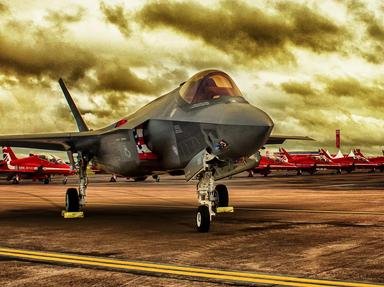Quiz Answer Key and Fun Facts
1. In 1982, the Fleet Air Arm operated a total of three Sea Harrier squadrons. 800 Naval Air Squadron and 801 Naval Air Squadron were the two operational, front-line units, but which was the Sea Harrier training squadron?
2. On 21 April 1982, during the transit south of the Royal Navy task group established for the operation to retake the Falkland Islands after its invasion by Argentina, an Argentine Air Force Boeing 707 shadowing the task group was intercepted by a Sea Harrier for the first time. From which aircraft carrier had the Sea Harrier been launched?
3. Although the two front-line Sea Harrier squadrons had been reinforced with aircraft and aviators from the training squadron, the limited numbers saw the reformation of 809 Naval Air Squadron in April 1982 as a third operational squadron. At which Fleet Air Arm base was it established?
4. As part of the overall Argentine effort to secure the Falkland Islands and disrupt the British task group, the Argentine Navy planned to launch an air strike on the two British aircraft carriers, using aircraft launched from its own carrier. What was its name?
5. During its transit to the South Atlantic, 809 Naval Air Squadron had to make two stopovers prior to joining the ship intended to take them the rest of the way. The squadron met the ship at Ascension Island, but in which West African country had it stopped first?
6. 809 Naval Air Squadron finally left aboard the container ship SS Atlantic Conveyor on 6 May bound for the South Atlantic. Atlantic Conveyor was owned by the Atlantic Container Line, but was registered by which UK shipping company?
7. A total of three Type 42 destroyers had originally sailed with the task group. By the end of May, which was the only one still in the area of battle?
8. The Exocet missile was a cause of significant concern to the British task group. Which aircraft in Argentina's inventory was used to carry and launch the Exocet?
9. Following the end of hostilities, 809 Naval Air Squadron was retained in the area of the Falkland Islands to provide air defence cover until a new runway could be built at Port Stanley. From which aircraft carrier did the squadron operate?
10. In October 1982, 809 Naval Air Squadron handed responsibility for the air defence of the Falklands over to the Royal Air Force. Which RAF aircraft was used in the role?
Source: Author
Red_John
This quiz was reviewed by FunTrivia editor
Bruyere before going online.
Any errors found in FunTrivia content are routinely corrected through our feedback system.
